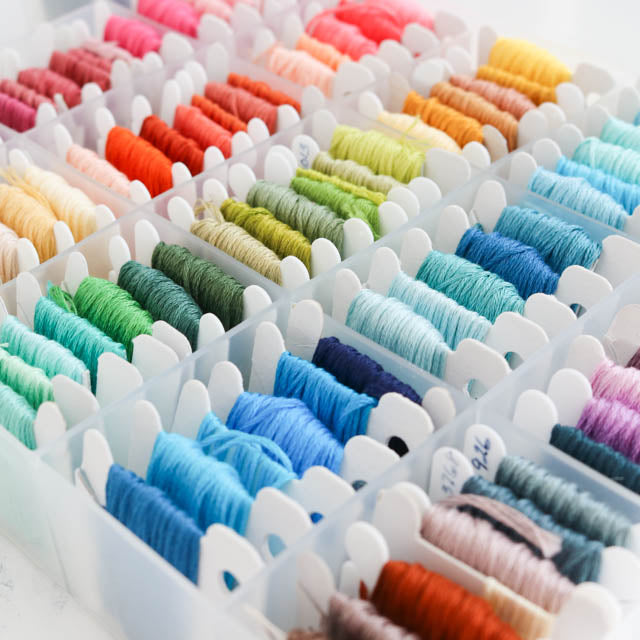
Conditioning embroidery floss involves applying a thin layer of beeswax or synthetic wax to your thread before you start stitching. It's done in all kinds of needlecrafting, from cross stitch to hand embroidery to quilting and sewing. Bookbinders and beaders also use thread conditioners.
Taking the time to conditioning your thread may seem like an unnecessary extra step, one that you might be tempted to skip in your excitement to just start stitching. But there are some benefits to conditioning your thread, and the process takes only a few seconds.
Let's take a look at the options, the benefits, and how to properly condition your thread.
Types of thread conditioners
Thread conditioners come in two main types: natural beeswax and synthetic silicone-based formulas.
Thread Magic is the most widely available silicone-based formula. It's acid-free and non-toxic. Thread Magic comes in small pots that are easy to toss in your project bag. One version comes with a handy built-in thread cutter.

The other conditioning alternative is beeswax. Beeswax has been used for thousands of years in hand embroidery and sewing. Like the synthetic versions, It won't discolor over time or break down the fibers. Beeswax comes in tins or it can be molded into decorative shapes. Be sure to look for a product that is 100% beeswax with no paraffin mixed in.

What kind of thread conditioner should I use?
My personal preference is beeswax because of its proven longevity, and because it's a natural product. But I encourage you to try both and see what you like best.
What does thread conditioning do?
I talked with beeswax maven Janis Note of Noteworthy Needle who hand pours thousands of tins of Beeswax Bliss, a 100% natural, small batch thread conditioner, about the benefits of waxing thread before using it.
Janis explained that applying a thin coat of wax to your thread has many benefits. Waxing strengthens your floss, reduces any fuzziness, and minimizes tangles when you stitch. When stitching with multiple strands of floss, waxing also helps the strands cling to each other and lay well.
These benefits are particularly noticeable when you are stitching with metallic or specialty threads. Waxing tames the threads and makes them much more manageable and easier to stitch with.
How to apply beeswax or thread conditioner
When it comes to beeswax (or any thread conditioner for that matter), a little goes a long way. Janis says the coating of wax should be practically undetectable. If your thread resembles dental floss, you've gone way overboard.
To apply wax, lay the thread on top of the wax and use your thumb to hold it in place. Gently pull the thread between the wax and your thumb. Don't push down hard with your thumb. You don't want the thread to really dig into the wax.

After the wax is applied, run your thumb and forefinger along the length of the fiber to smooth it and evenly distribute the wax.
When stitching with more than one strand of floss, run each individually along the wax, and then combine them before smoothing between your thumb and forefinger.
When to condition your thread
There are stitchers who swear by waxing and who condition their thread every time they stitch, and then there are others who never use wax. I am somewhere in the middle.
When working with natural fibers like standard cotton embroidery floss, I don't tend to wax my thread. But I find waxing really pays off when stitching with metallic thread, glow in the dark thread, or DMC's Mouline Etoile floss.

A tin of beeswax (or jar of Thread Magic) is an easy thing to carry around, and I consider it an essential tool in my stitching tool case.
Ready to give thread conditioner a try? Shop our full selection of stitching tools and notions!




